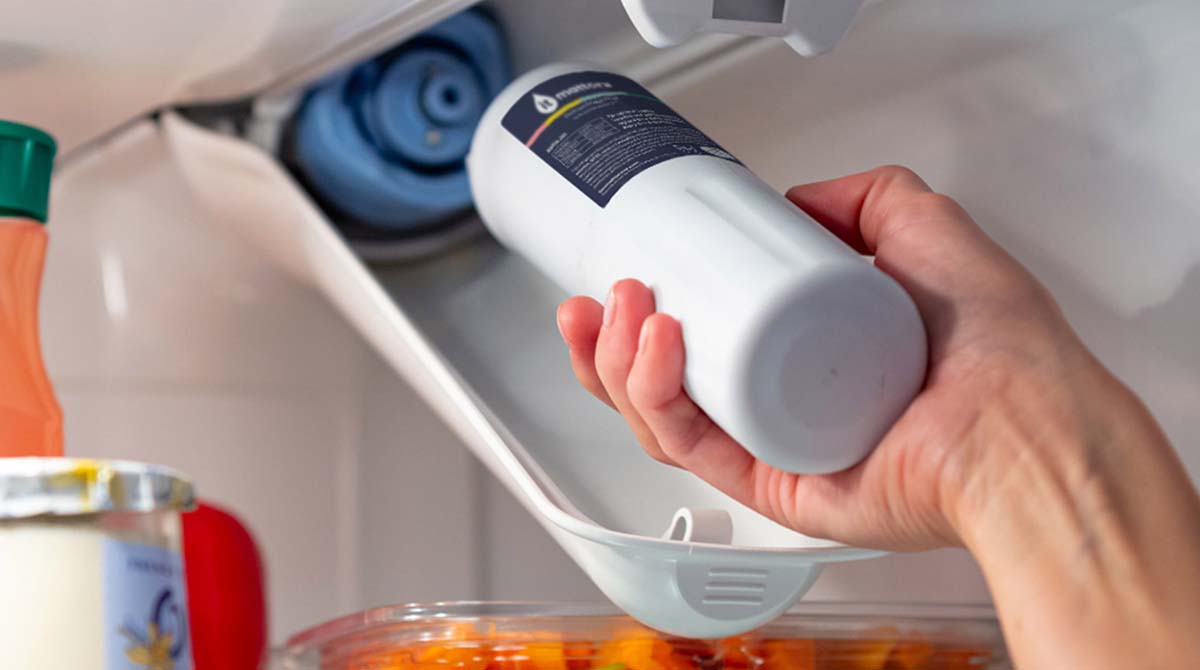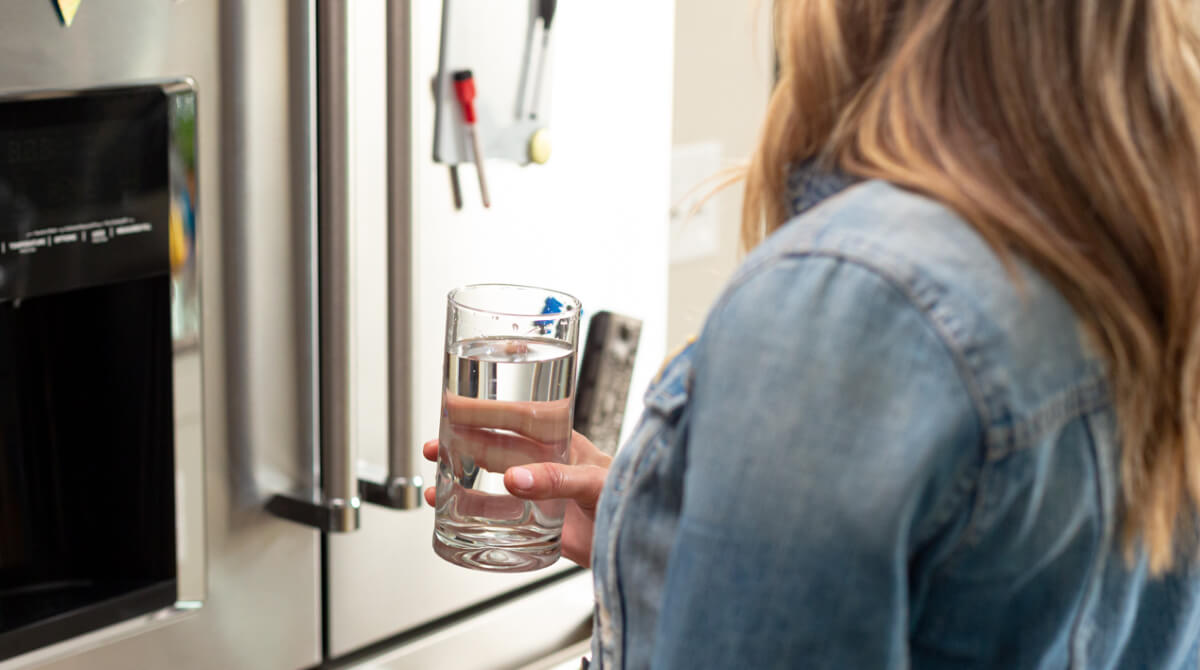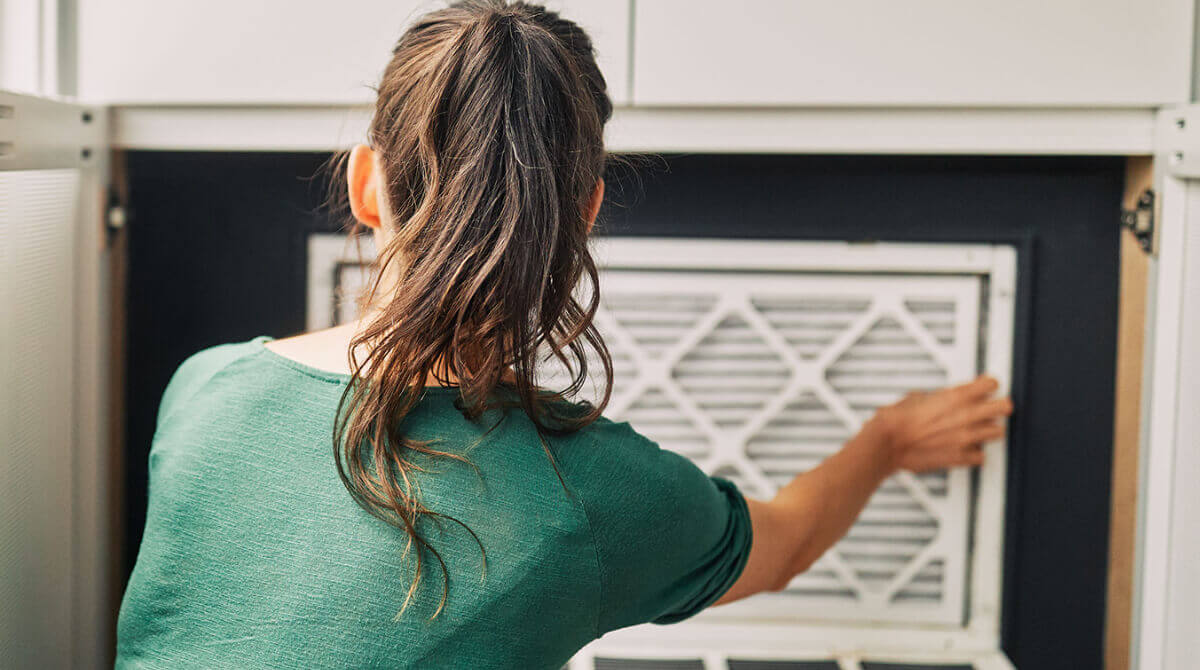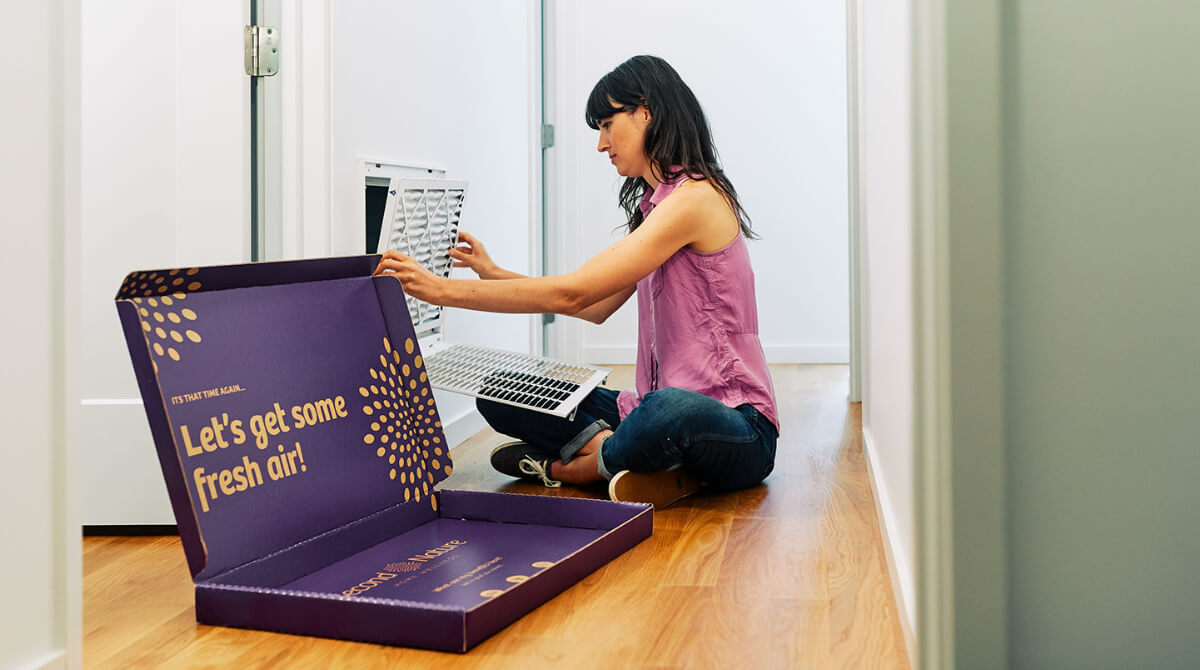How to Get Rid of Cat Dandruff or Dander
Learn how to get rid of cat dander in your home and reduce allergy symptoms. Calling all cat lovers. Does your skin frequently turn red when Whiskers scratches or licks you? Do you ever feel your eyes start to water when Abraham Linkitten falls asleep anywhere remotely close to you? If any of these questions have you nodding in agreement, we’re here to inform you that this is not just you crying from cuteness overload, and in fact, you might be one of the 3 in 10 Americans who suffer from a pet allergy. We know that finding a new home for Leonardo DiCatrio is not an option, so with today’s blog post, we’re going to talk about how to get rid of cat allergies and reduce cat dander in your home so you can comfortably cuddle with your cat all day long. Why do you have a cat allergy? What is cat dander exactly? How to get rid of cat dander STEP 1: Make sure your cat is healthy STEP 2: Groom your cat STEP 3: Clean your home STEP 4: Change your air filter First, let's start with the basics: Why do you have a cat allergy? Contrary to popular belief, the main culprit behind your allergies isn’t your pet’s fur, it’s their dander. (Other animals have dander too, so learn how to reduce pet dander for your other furry family members.) When you feel that familiar tickle in your throat, it’s the reaction of your immune system playing things safe and trying to fight off allergens. Every cat produces dander, so having a non-shedding cat or one deemed a “hypoallergenic animal” will offer little relief for your allergy symptoms. So when it comes to how to get rid of cat allergies, we need to talk about how to reduce cat dander. What is cat dander exactly? Dander refers to the microscopic pieces of dead skin that animals with fur or feathers shed into their surrounding environment. You might be wondering, “What does cat dander look like?” but it is so small that it can’t be seen by the naked eye. Since its defining characteristics are being tiny and lightweight, dander has no problem remaining suspended in the air for long periods of time. Its rough edges allow it to easily latch onto the surfaces in your home, especially those that are softer like bedding and upholstery. Since cat dander can glide through the air and hook onto clothing without much difficulty, it can even spread to places where no cat has been before. One of the reasons that cat dander is a major allergen is because of a protein called Fel d 1, which is commonly found within the skin, urine, and saliva of cats. Research shows that male cats produce less of this protein than female cats, so if you’re a first-time cat owner, it may be in your best interest to adopt a Mrs. Sparkles instead of a Mr. Sparkles. Siberians, Balinese, and Russian Blues are low shedding cats that would all be good options for those with severe allergies because they produce less of the Fel d 1 protein. My cat has dandruff Cat dander vs dandruff, what’s the difference? Cat dandruff is the visible white flakes of dead skin that can be found in your pet’s fur. If you find a large quantity of dandruff in your cat’s fur, it can be a sign of a medical problem. Dander, on the other hand, is microscopic and completely normal for cats to shed. Both dander and dandruff contain the Fel d 1 protein that is responsible for your allergies. Want to know how to get rid of cat dandruff? Keep reading and follow the same first two steps to reduce cat dander in your home. How to get rid of cat dander & dandruff So, what are we going to do about all of this? Don't worry, we've got four easy steps for you to help significantly reduce dander in your home. This way you can stop sneezing every four seconds and fully appreciate the companionship of your furry pal. Here’s how to get rid of cat dander: STEP 1: Make sure your cat is healthy If it seems like your cat is producing more dander than they should be, a trip to the vet may be in order. A skin test can help you find out whether your cat has problems like mites, yeast, or fleas that cause excess dander production. Obesity and diabetes are also conditions that will cause your pet to produce an abnormal amount of dander. Check with your vet to figure out the best treatment plan for your furry friend if they are suffering from any of these ailments. You know what they say, you are what you eat. If your cat follows a healthy diet, their overall well-being will improve. Give your cat food that is packed with natural ingredients and especially high in omega 3 fatty acids. Meat should always be near the top of the ingredient list. A healthy cat will help reduce cat dander in your home. In addition to reducing dander, omega 3 fatty acids help keep your cat’s coat healthy, strengthen their immune system, reduce irritation and dryness of the skin, and prevent joint pain. STEP 2: Groom your cat Bathing your cat is the first step to having a well-groomed pet. We know, we say “bathe your cat”, you hear “start an apocalypse”. If your cat is extremely opposed to water, abort bathing and skip over this section for other grooming ideas. If you are an allergy-sufferer and are wondering exactly how often to bathe a cat, it’s recommended that you bathe your cat once a month at the minimum, but every one or two weeks would be ideal. This is one of the best ways to remove cat dander from your home. Don’t bathe your cat more frequently than that, however, because overbathing will most likely irritate your cat’s skin, causing them to produce even more dander. If possible, start bathing your cat when they're just a kitten so that they'll be more used to the concept by the time they're an adult. To make things easier for you, we created a step-by-step tutorial on how to approach this aspect of grooming your kitty. Don’t worry, this won’t be Mission ImPAWsible (sorry, couldn’t resist). How to bathe a cat (without getting scratched) to reduce cat dander: Bust out the laser pointer and tire out your cat before the big event. This will help keep them as calm as possible. Playing with your cat near the site of bathing may also reduce their anxiety in this environment. Make sure the sink or tub where you’re planning on bathing your cat is equipped with non-slip material like a bath mat. A wet towel or an old t-shirt also works great for this purpose. Have your cat shampoo and conditioner on hand. We recommend using a natural cat shampoo with oatmeal and aloe vera to soothe your cat’s skin and keep it moisturized. Create a mixture of water and shampoo (about 1 part shampoo and 2 parts water) to make it easier and quicker to rub the soap into your cat's fur, as well as rinse it out. Bring your cat to the tub/sink and if you don’t have any assistance, use a harness with a leash. Strap your cat into the harness and then wrap the leash around the faucet. Slowly massage shampoo into your cat’s fur. Then make sure to thoroughly rinse it all out because any lingering chemicals will potentially irritate the skin and lead to increased dander production. Using conditioner can also further moisturize your cat’s skin to keep it from drying out. Dry off your cat with a towel, or if they permit, a blow dryer on the lowest heat setting. Start your very own cat bathing business because that went so well! Nice work, we’re proud of you. How to groom a cat without water to reduce cat dander: We understand that for some cats, water is public enemy number one and bathing is completely out of the question. If that’s the case, we have some alternative grooming solutions to keep your furry friend happy and your allergies at bay: Damp cloth Dander-removal spray Brushing If your cat is as “allergic” to water as you are to their dander, try using a damp cloth instead to gently wipe down their fur. Add cat dander removal spray to the mix and this is a surefire way to reduce the amount of dander in your home. All you have to do is spritz the cloth a few times and then move it first in the opposite direction of the fur, and then the same direction. This should be enough for the spray to do the trick and reduce dander buildup on your pet’s skin. In addition to other grooming methods, it is also recommended that you brush your cat’s coat about three times a week to remove fur and dander that would otherwise become airborne. If your pet has longer fur, it would be best to do this daily. Remember, grooming your cat regularly is also how to get rid of cat dandruff and keep your kitty sparkling clean. Grooming your cat regularly can also help remove any dust or pollen that may be lingering in your cat’s fur and contributing to your allergy symptoms. STEP 3: Clean your home When it comes to how to get rid of cat allergies, it’s not just your furry friend that needs cleaning. You can reduce cat dander by giving your whole house a wipe-down. We’re talking leave no hardwood unswiffered, no carpeting unvacuumed, no counter unwiped, no filter unreplaced- you get the gist. It’s time to bring out that all-purpose cleaner and get down to business. Clean all fabric Softer surfaces like bedding, couches, drapes, curtains, and rugs are all going to be hot-spots for dander. We recommend throwing your drapes, rugs, and couch covers (if you have them) in the washing machine a few times a month to get rid of as much of the allergen as possible. Lint rolling your drapes and couches at least once a week can also be effective if washing them is too much of a hassle. Wipe down surfaces The second step to cleaning your home is to eliminate as much cat dander as possible from every surface in sight. The best way to tackle this is with either a soapy rag or a natural all-purpose cleaner and towel. Counters, walls, doors, and cabinets are all fair game for prime dander hideouts, so a quick wipe down is extremely helpful in keeping your home as allergen-free as possible. Make sure to pay special attention when cleaning the places your cat visits the most. This includes all of your cat’s toys, their bed, and on top of that one kitchen cabinet (we don’t know how they get up there either). Don’t let your cat into your bedroom This is easier said than done, we know. Keeping your cat out of your bedroom will at least keep the source of the allergens out of your sleeping environment. If you currently sleep with your cat and feel your allergies acting up at night, consider purchasing a pet bed and placing it in a different room. If you or your cat are against this idea, make sure that all of your bedding is machine washable. Vacuum the carpets Cat dander can easily become lodged within the fibers of your home’s carpeting, and the constant influx of people and pets walking around will uproot that dander straight back into the air. Vacuuming at least once a week is essential in keeping your carpet and home as dander-free as possible. Clean the litter box Your cat’s litter box can be a goldmine for allergens, so it’s best to be extra careful when cleaning it out. If possible, keep your pet’s litter box in an area of the house that you don’t frequent, like the garage or basement. Wondering how to clean a litter box? Scrub it down with a natural detergent or some baking soda, then rinse it out with warm water. Just make sure to thoroughly clean out any remaining soap residue. STEP 4: Change your air filter Where there are cats, there should be regularly replaced air filters. This is the final and most simple step (also our favorite) for how to reduce cat dander and keep your home as dander-free as possible! Since dander is commonly airborne, it will often have a presence within your air ducts, resulting in your HVAC system redistributing the particles back into the air in your house. The only way to break this cycle is by using a high-quality air filter that will trap these small particles before they can even think about making you sneeze. An air filter with a MERV rating of at least 11 should be a staple in every pet owner and allergy-sufferer's home. However, our Catch All filter (MERV 13) would be better suited for pet owners that have more severe allergies. We recommend replacing your filter every three months at the minimum to ensure that it’s operating at maximum efficiency. If you have more than one pet in your home, changing your filter every 1 to 2 months will likely be better for your home’s air quality. If you find that you need to adjust the frequency of your filter changes, we know of a great subscription service with a convenient custom scheduling option. Try it out right over here. Now you know our best tips for how to get rid of cat allergies, dander, and dandruff. Taking preventative measures in your home will go a long way in managing your allergy symptoms. Regularly grooming your cat, cleaning furniture and flooring, and replacing your air filter are all simple steps that you can take to reduce the amount of cat dander in your home. Cats regularly rate our boxes 5/5 stars. Now, what are you doing? Groom that cat, vacuum that floor, and change that air filter.
 February 6, 2023
February 6, 2023
Read more

February 6, 2023













